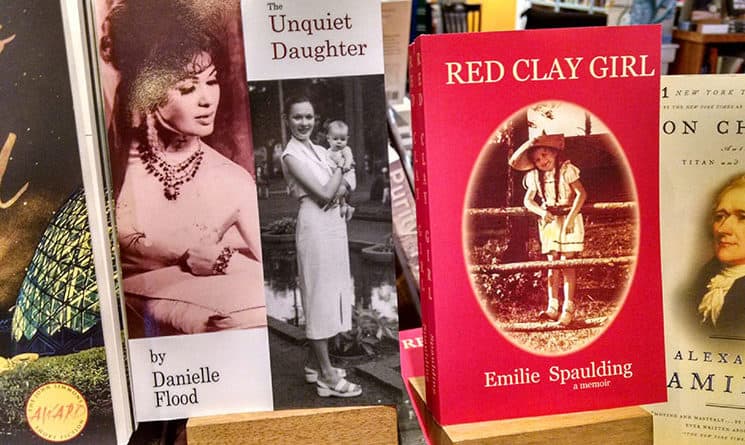Despite the avalanche of Kindles, iPads, and Nooks that will inevitably be under countless Christmas trees this year, print books are still alive and well. A study released in September by the Pew Research Foundation found that among the 73 percent of Americans who have read a book in the last year, two-thirds opted for print books over ebooks.
That readers still flock to paperbacks despite the easy availability of ebooks is just one of the reasons that traditional print books are still relevant, according to local publishers. It goes beyond the romance of a new book fresh from a bookstore shelf, though that’s still a factor. For Granite State publishers and writers, print books remain one of the most practical, visceral ways to connect with readers.
Author Jeff Deck, a member of the New Hampshire Writers’ Project, thinks of it like this: Indie publishers and self-published authors have to have something physical to hand to readers.
“A big part of it is having something with you in public, so that if somebody’s interested, you can hand them a copy of your book,” Deck says. “Or, if they’re taking a picture of you at a book event, you can hold up your print copy of your book. If you hold up your Kindle, nobody’s going to see what’s on it.”
And readers crave that physicality. According to the American Publishers Association, sales for paperback and hardback books increased between 2015 and the first half of 2016 (with growth of 8.8 percent and 0.9 percent, respectively), while ebook sales declined 20 percent.
“The white noise (in the industry) is insane. The good news is anybody can get their book published. The bad news is that anybody can get their book published.” — Tom Holbrook of Piscataqua Press
Romancing the page
Ask most writers, readers, and publishers, and they’ll tell you there’s something intrinsically romantic about an actual, physical book.
“It’s the emotional experience. The smell, the sound, that first crack of the cover, the feel of the paper,” says Deidre Randall, CEO of Peter E. Randall Publisher in Portsmouth.
There’s a weight to printed books that makes them seem more real, Deck says. “It’s silly stuff, like when you’re picking up a big, fat book in print and you can tell it’s going to take you a long time,” he says. “I still get more pleasure taking a book out of the library than buying something on the Kindle store.”
While those physical sensations are an important part of reading, they’re not the sole reason print remains popular. Tom Holbrook is the owner of Piscataqua Press, an independent publisher, and RiverRun Bookstore in Portsmouth. He publishes between 25 and 35 books a year and carries some 200 self-published books in his store — a small number compared to the hundreds of thousands of books that are self-published every year.
“The white noise (in the industry) is insane,” he says. “The good news is anybody can get their book published. The bad news is that anybody can get their book published.”
For some authors, print books are a way to cut through that white noise. Anybody can publish an ebook cheaply and quickly, but print books require extra time, effort, and money. Putting a little more work into making a physical copy can give a book a sense of legitimacy, according to Deck.
“If you get a good cover design and professional formatting … there isn’t such a stark line anymore between your product and the production of traditionally published authors,” Deck says.
But that sense of legitimacy alone isn’t enough to keep print alive. Piscataqua Press is a “pay to publish” publisher — authors pay a fee to have their book designed, formatted, and printed. Piscataqua Press and other publishers have made it easier than ever for writers to get their books into the world, but that’s also created fiercer competition for readers.
“The tools are now out there for anyone to make a book that looks good,” Holbrook says, “and that’s revolutionary. But that also means we end up with 300,000 self-published books a year, which can’t all possibly find a market because the readership is sinking.”
Practical effects
According to the Pew survey, 38 percent of respondents only read print books, while 28 percent read both print and digital. Only 6 percent read only ebooks (26 percent said they didn’t read any books in the last year). For independent authors like Deck, print books work hand in hand with ebooks as a marketing tool.
“For indie authors, I think most of them are making more money from ebooks than print books, but they’re still doing a print version to help with (marketing),” Deck says. For example, “if you have both an ebook and print version of your book on Amazon, and you look at the page for the ebook version, the print price is crossed off below the ebook price and it shows that your ebook is a deal.”
“People don’t want to curl up with their child at night with a book on their iPad.” — Deidre Randall of Peter E. Randall Publisher
And while writers make the least amount of money from their books through bookstore sales, having copies on the shelf can still make a difference. Customers at RiverRun make decisions on book format based on availability, he says.
“If someone comes in and says, ‘Do you have “The Shining?”’ and I have it, they’ll buy the paper copy. If I say no, they’ll say, ‘I can just download it.’ Even though they can get it in two or three days from me, or they can even get it in two or three days from Amazon, it’s all about right now,” Holbrook says.
Meanwhile, there are some genres that don’t lend themselves to ebooks. Peter E. Randall Publisher’s catalogue includes a number of children’s books and books on photography, and Randall says experiencing genres like those digitally just doesn’t translate.
“People don’t want to curl up with their child at night with a book on their iPad,” she says.
Art, science, and perspective
Those practicalities also reflect the artistry that goes into producing a physical book. The final product is just as much an exercise in creativity as the words themselves. Hobblebush Books in Brookline is a traditional publisher that partners locally with Durham’s Oyster River Press to release poetry chapbooks, translations, and other books for which the physical design is important.
“There’s a long history that goes into the art of typography,” says Kristy Walker, Hobblebush’s president. “When the reader is choosing the font size and typeface they want to use (in an ebook), you can’t put in all those beautiful aspects.”


